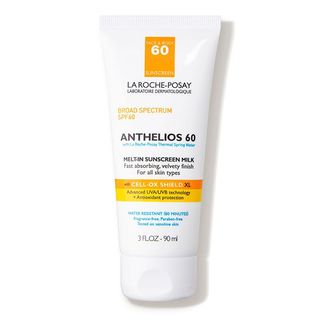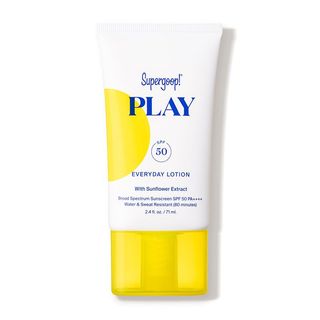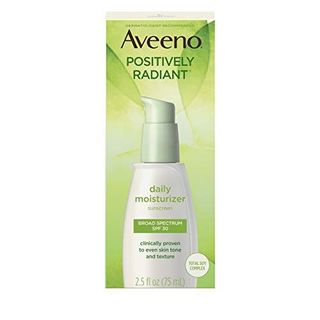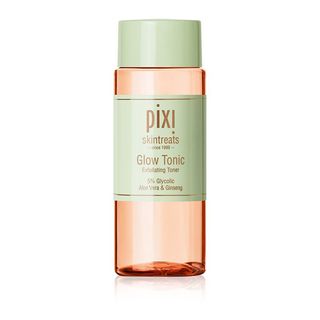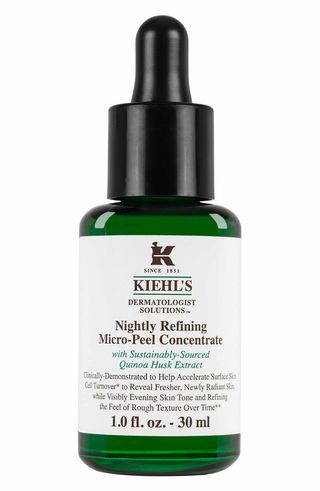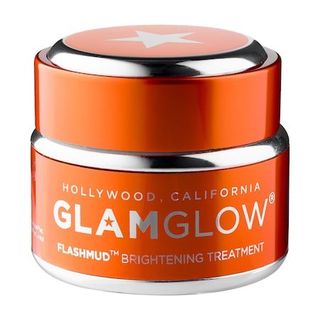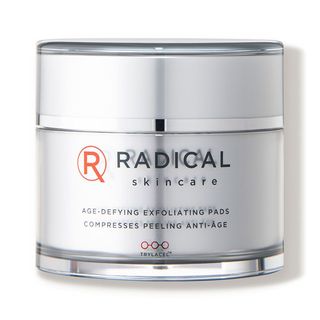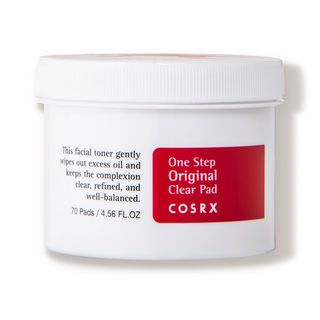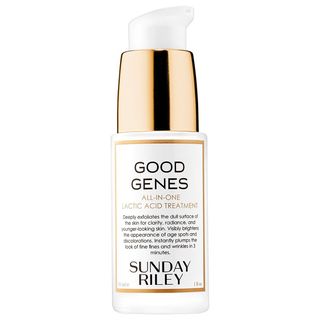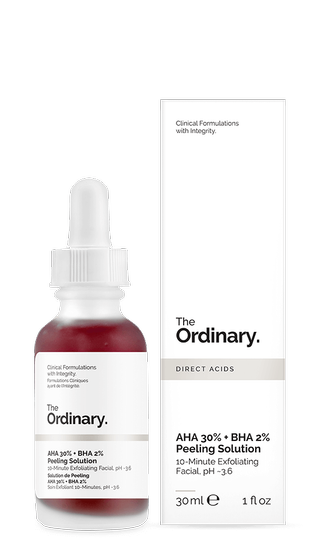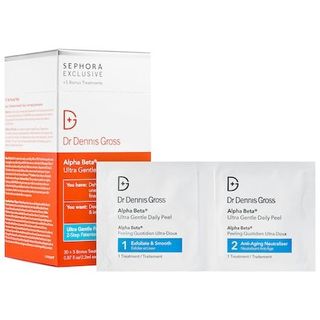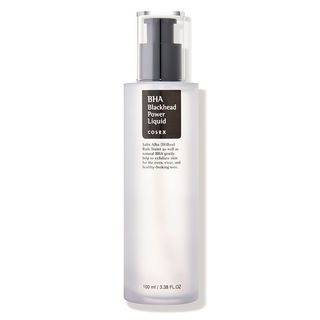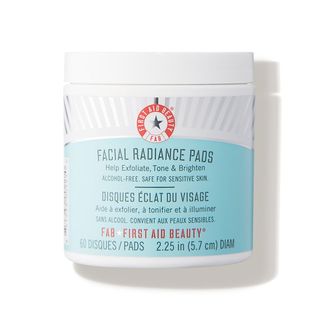

BLAME IT ON: My HormonesTREAT IT WITH: SunscreenAlSO BLAME IT ON: My EthnicityTREAT IT WITH: AcidsTHE FINAL RESULT...
In some ways, my skin never stood a chance. I went to high school on the Jersey Shore in the early '00s—i.e. the height of the tanning craze, when every blonde celebrity had the pallor of fruit leather, and my friends were hitting the tanning beds multiple times a week.
But I didn't want to wind up wrinkled before I was 25—or you know, a statistic (fact: One American dies every hour from melanoma). So I stocked my bathroom with sunscreen, and diligently hid under an umbrella at the beach. I was, by most accounts, the model of sun safety.
Until, that is, one lazy afternoon in July 2013. I sat in the sun a bit too long and got a mild sunburn. Not particularly remarkable—just enough to make me feel hot and itchy. I took the usual steps: applying cooling aloe vera gel and extra moisturizer, and sitting on my hands to keep from picking. But the burn didn't go away.
After a few weeks, it morphed from red to brown—a mottled shade that required me to coat my face in foundation in an attempt at even skin tone. That was was five years ago. Now, I have permanent brown patches on my cheeks and forehead. If I'm not wearing makeup, and sometimes even when I am, people comment on my "tan," asking, "Did you just get back from vacation?" No. No, I did not. And I have this frustrating, permanent "mask" to show for it.
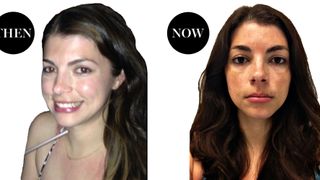
For a few years, I just relied on makeup to cover up my past. And then I realized, hey, I'm an editor, and I have a ton of dermatologists at my disposal, so why not use them to find out what exactly happened to my skin and what I can do about it? Here's what they had to say:
BLAME IT ON: My Hormones
When I visited dermatologist Neal Schultz, M.D., he took one look at my face and declared a diagnosis: melasma. "Melasma is a skin condition caused by estrogen, which makes your pigment cells hypersensitive, resulting in patchy patterns often seen on the cheeks and forehead," he says. "One bad burn, and it's there forever." Uplifting, right? Though melasma usually shows up during pregnancy (thanks to those raging hormones), it's also linked to certain kinds of birth control—a thing I most definitely am on.
Stay In The Know
Marie Claire email subscribers get intel on fashion and beauty trends, hot-off-the-press celebrity news, and more. Sign up here.
RELATED STORY

"The sun can darken melasma faster than we can professionally lighten it, so we want to be extremely careful about sun protection," said Dr. Schultz. He was somewhat pessimistic about my prognosis (melasma is notoriously tricky to treat, since its tethered to your hormones), but stressed the importance of using sunscreen to keep it from worsening.
TREAT IT WITH: Sunscreen
This one is nonnegotiable—you need to wear serious sunscreen in the rain, sun, snow, even when you're indoors. Instead of chemical formulas, which absorb and scatter UV rays across your skin, he advised me to switch to a physical (i.e. mineral) sunscreen, which deflects UV rays like a mirror. It turns out that my morning moisturizer with a hint of SPF wasn't cutting it—you need a legit sunscreen to prevent melasma or protect it from getting worse. You can choose any brand you'd like, as long as it's SPF 30 or higher, but these are my four favorites.
AlSO BLAME IT ON: My Ethnicity
The only thing better than blaming your parents for all of your problems is blaming your parents' parents' parents' parents. Before I visited dermatologist David Colbert, M.D., I hadn't given much thought to my ethnic background since seventh grade social studies.
So when he asked me about my profile, my response was, "Um, white?" After pressing me for specific countries, I rattled off the list: a little Italian, a little Irish, some Polish, Serbian, German. The tiny bit of Irish caught his ear. According to Dr. Colbert, that was likely the part of my history that was overpowering the others, leaving me with something called Type I skin—as in, skin as pale as it possibly gets. That hue coupled with my day in the sun, along with my use of birth control made me an ideal candidate for lasting discoloration.
TREAT IT WITH: Acids
Because I wasn't about to go off of my birth control in the name of even skin. And because I haven't figured a way to change my DNA, Dr. Colbert recommended adding in gentle chemical exfoliant—like glycolic acid, lactic acid, or retinol—to help speed up my skin's resurfacing process. Use only one of these at a time (unless you want to burn your skin off), and apply just once every other night, before your moisturizer.
THE FINAL RESULT...
Has been slow. Every doctor I spoke with warned me that slow and steady would win the race—or, you know, get my skin to a place I'm happy with. So I'm currently trying a bit of everything: slathering on the mineral sunscreen every single morning, while using the exfoliating pads every few days and the lactic serum every other night. None of the doctors offered me an easy out, because, unfortunately, the problem takes both time and patience to treat.
I will say, though, that my skin and I are fully enjoying the daily pampering and extra attention. It's a small penance for burning it so badly in the first place. But word to the wise? Be good to your sweet, glowy, youthful skin while you have it. One bad afternoon in the sun is all it takes for it to never look the same.
If you do encounter a bad skin day, turn to one of my favorite foundations:
-
 These Luxury Beauty Gifts Are Proven to Make Mom Feel Spoiled on Mother’s Day
These Luxury Beauty Gifts Are Proven to Make Mom Feel Spoiled on Mother’s DayThe best in makeup, haircare, and skincare for your favorite woman.
By Brooke Knappenberger Published
-
 Women on ‘The Hills’ Were Put In ‘Compromised Situations’ Like ‘Blood Sport,’ Cast Member Lo Bosworth Says
Women on ‘The Hills’ Were Put In ‘Compromised Situations’ Like ‘Blood Sport,’ Cast Member Lo Bosworth SaysAs compared to its predecessor, ‘Laguna Beach,’ Bosworth said ‘The Hills’ had a “much bigger impact from a drama and trauma perspective.”
By Rachel Burchfield Published
-
 Emma Stone Has a Credit on Bestie Taylor Swift's 'Tortured Poet's Department'
Emma Stone Has a Credit on Bestie Taylor Swift's 'Tortured Poet's Department'Their decade-long friendship has been immortalized in Swift's discography for the second time.
By Quinci LeGardye Published
-
 The Bar Soap Boom Is Here
The Bar Soap Boom Is HereDespite endless body wash options, the art of luxury soap making hasn't slipped away.
By Sophia Vilensky Published
-
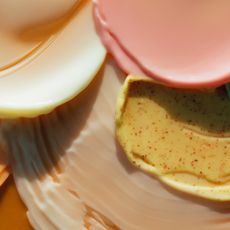 The 13 Best Products for Rosacea That Fight Redness and Irritation
The 13 Best Products for Rosacea That Fight Redness and IrritationFlare-ups are a thing of the past.
By Samantha Holender Published
-
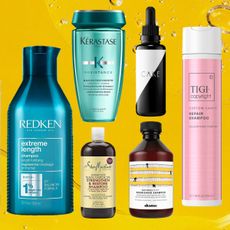 The 32 Best Hair Growth Shampoos of 2024, According to Experts
The 32 Best Hair Growth Shampoos of 2024, According to ExpertsRapunzel hair, coming right up.
By Gabrielle Ulubay Published
-
 The 20 Best Hair Masks for Damaged Hair, According to Experts and Editors
The 20 Best Hair Masks for Damaged Hair, According to Experts and EditorsHealthy strands, here we come!
By Gabrielle Ulubay Last updated
-
 Selena Gomez Just Shared Her Entire Morning Skincare Routine on TikTok
Selena Gomez Just Shared Her Entire Morning Skincare Routine on TikTokThe most giving girlie.
By Iris Goldsztajn Published
-
 How Often You Should Wash Your Hair, According To Experts
How Often You Should Wash Your Hair, According To ExpertsKeep it fresh, my friends.
By Gabrielle Ulubay Published
-
 The 11 Best Magnetic Lashes of 2023
The 11 Best Magnetic Lashes of 2023Go ahead and kiss your messy lash glue goodbye.
By Hana Hong Published
-
 Beauty Advent Calendars Make the Perfect Holiday Gift
Beauty Advent Calendars Make the Perfect Holiday GiftThe gift that keeps on giving.
By Julia Marzovilla Last updated
